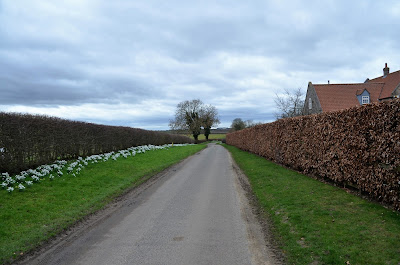Many of the snowdrops are forming seed now and it is time to nip out the spent flower to conserve and build up the bulbs. There are still varieties in bloom however but, first, a lovely hellebore tested over time and now occupying a north facing situation in its square pot where perhaps it is not as voluptuous as previous years. Still, as featured in
2014, Helleborus × hybridus 'Harvington Double White" is a spectacular sight when in full bloom. The dark situation delayed its flowering by over a month. It is repaying the wait for it does lighten the heart


Now for the snowdrops. First, two that are very similar. "The Wizard" is from
Avon Bulbs. We are promised that we will fall under its spell. If it matches "Trymposter" it will do well. Both are seedlings of "Trym", "Wizard" having the more rounded outer petals, and an inner that is more or less green.
 |
| "The Wizard" |
 |
| "Trymposter" |
Next up is another plicatus variety, "Sophie North", noted for its short stems, thick, glaucous leaves and a tragic story for it was named after a girl in the Scottish village of Dunblane who died in the dreadful massacre of schoolchildren there in 1996. Sophie had lost her mother to cancer two years before the event. The snowdrop is distinctive at the front of a border, precious and a fitting way to remember a child.

Snowdrops can look underwhelming when photographed. "Duckie" is actually distinctive, with imposingly white petals and a dark green inner that makes a good contrast. It was introduced by Alan Street, and the second snowdrop is a reworking of his name "Alan's Treat". This is a dainty snowdrop that looks rather overwhelmed in the border by other green tipped varieties. I'll move it when it ceases to flower for it is a choice variety. (As an aside, should I ever have a snowdrop named in my honour I want it robust.)
 |
| "Duckie" |
 |
| "Alan's Treat" |



Too much white perhaps. A few spots of colour. The crocus have been with us for a decade and grow thickly. I have no idea of the name. The two cyclamen coum were taken from the bottom of the garden, where they proliferate with their autumn cousins, and popped into pots. One was selected for its pale foliage, the other for its dark foliage and sharp colour. On this measure, the darker the foliage the more vigorous the plant.
























































